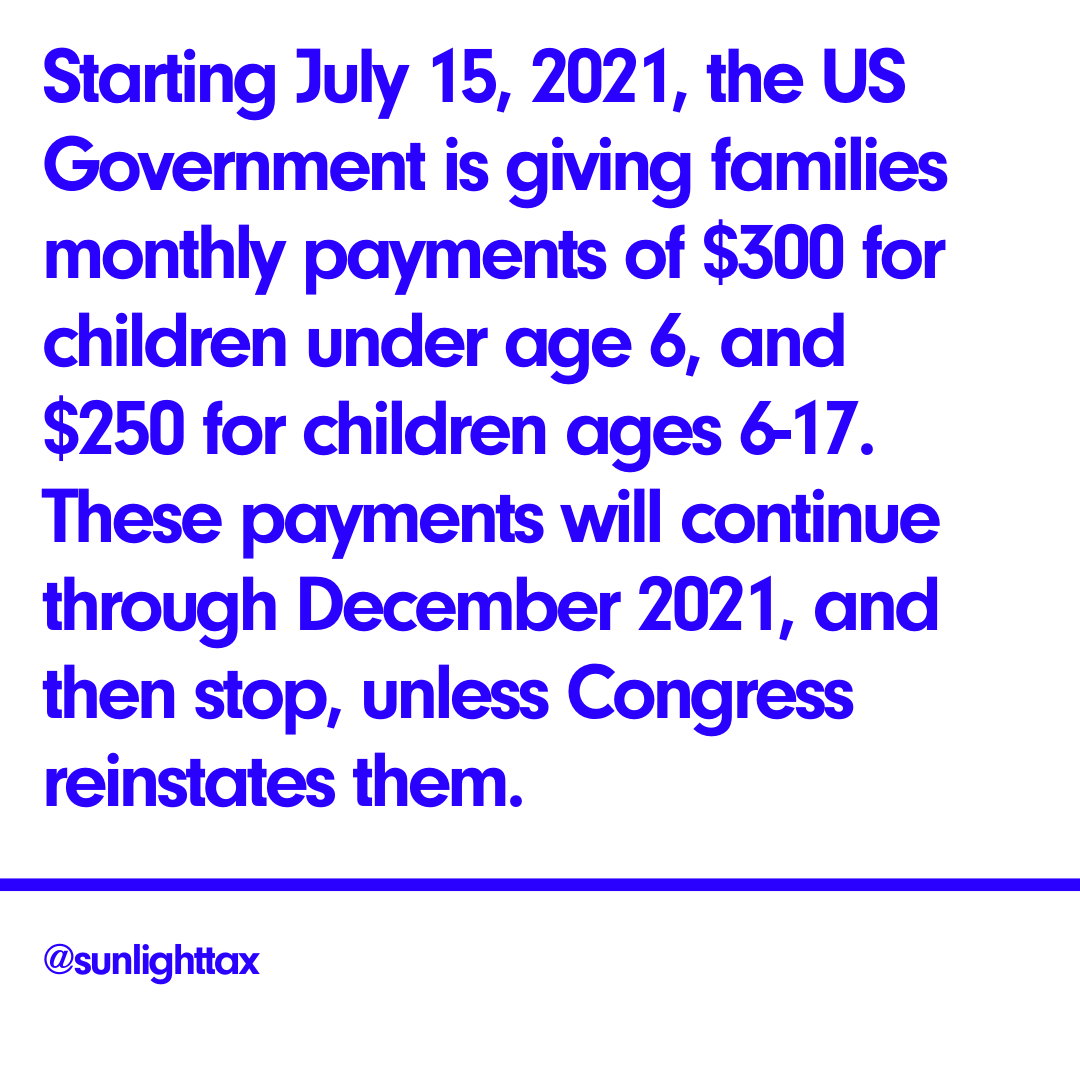What you need to know about the Child Tax Credit
Starting July 15, 2021, the US Government is giving families monthly payments of $300 for children under age 6, and $250 for children ages 6-17. These payments will continue through December 2021, and then stop, unless Congress reinstates them.
So what are they?
These payments are the result of an updated Child Tax Credit, expanded and revised by the Biden administration, and enacted in the March 2021 Biden stimulus bill. Before 2021, the Child Tax Credit was a refundable tax credit that--like most tax credits--was rolled into all your other credits at tax time, and delivered as a lump-sum reduction of your taxes, once per year at tax time. What the Biden administration did is threefold:
they expanded the amount of the credit--from $2000 per child under 17 to $3,600 per child under age 6 and $3,000 per child between ages 6-17, and
divided the credit up into monthly amounts, to be sent directly to families each month via direct deposit (or by check if you don’t have a bank account).
They also expanded eligibility for the credit, allowing all but the richest families to receive it (9 out of 10 families will get payments)
What you need to know
Money will be sent directly to your bank account by direct deposit starting Jul 15, 2021. The US Treasury will send money to the account listed on your tax return. If that is what you want, then no action is required. Families eligible for the credit are those with annual income less than $150,000 for married filing jointly, or under $112,500 for Head of Household (unmarried individuals with children). (Single filers with annual income under $75,000 are also eligible--although I’m still scratching my head about how these folks will actually be eligible, given that single filers without dependent children will not have children for whom to claim the credit). Families with higher incomes will be eligible for a reduced amount of the credit.
If you do not have bank account information listed on your last tax return, you will receive a paper check, mailed to the address listed on your tax return. If you’d like to receive direct deposit, you may enter your bank information at this IRS website. You can also use that site to check your eligibility for the credit.
What do you do if you don’t file a tax return and are eligible for the new Child Tax Credit monthly direct payments? You can sign up to receive the money at the IRS’s new non-filer sign up tool. This is important because many of the lowest-income people in the US do not file tax returns, and have therefore been ineligible for this and other tax credits in the past.
The expanded child tax credit is expected to have a huge impact on children in the US. It is predicted to lift 50% of children in the US out of poverty. Economic research shows that a monthly payment labelled “Child CTC” is more likely to be spent on the children it is meant to benefit than a lump-sum annual tax refund. And it will benefit 9 out of 10 families in the US. If you want the expanded child tax credit to continue past it’s expiration date of December 2021, be sure to let your members of Congress know.
Watch Hannah’s recent talks about the new child tax credit. If you have further questions about the credit, you can check out the IRS’ FAQ page for more information.
DISCLAIMER: True tax advice is a two-way conversation, and your accountant needs to hear your full situation to apply the rules correctly in your case. This post is meant for general information only. Please don’t act on this alone.
Hannah Cole is an artist and Enrolled Agent. She is the founder of Sunlight Tax.

